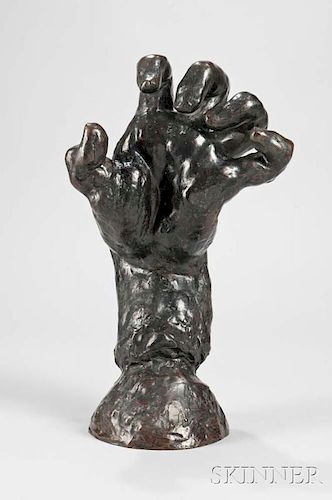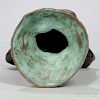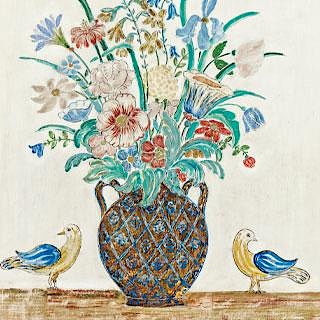Auguste Rodin (French, 1840-1917) Grande Main Crispée Gauche (Large Clenched Left Hand)
Lot 301
About Seller
Bonhams Skinner
274 Cedar Hill Street
Marlborough, MA 01752
United States
Founded over four decades ago, Bonhams Skinner offers more than 60 auctions annually. Bonhams Skinner auctions reach an international audience and showcase the unique, rare, and beautiful in dozens of categories, including the fine and decorative arts, jewelry, modern design, musical instruments, sc...Read more
Categories
Estimate:
$120,000 - $180,000
Absentee vs Live bid
Two ways to bid:
- Leave a max absentee bid and the platform will bid on your behalf up to your maximum bid during the live auction.
- Bid live during the auction and your bids will be submitted real-time to the auctioneer.
Bid Increments
| Price | Bid Increment |
|---|---|
| $0 | $10 |
| $100 | $25 |
| $500 | $50 |
| $1,000 | $100 |
| $3,000 | $250 |
| $5,000 | $500 |
| $10,000 | $1,000 |
| $30,000 | $2,500 |
| $50,000 | $5,000 |
| $100,000 | $10,000 |
| $300,000 | $25,000 |
| $500,000 | $50,000 |
| $1,000,000 | $100,000 |
About Auction
By Bonhams Skinner
May 19, 2017 - May 20, 2017
Set Reminder
2017-05-19 16:00:00
2017-05-20 16:00:00
America/New_York
Bidsquare
Bidsquare : Fine Paintings & Sculpture
https://www.bidsquare.com/auctions/skinner/fine-paintings-sculpture-2343
Bonhams Skinner bidsquare@bonhamsskinner.com
Bonhams Skinner bidsquare@bonhamsskinner.com
- Lot Description
Auguste Rodin (French, 1840-1917)
Grande Main Crispée Gauche (Large Clenched Left Hand)
Signed "A. Rodin" in the bronze base, inscribed "© by musée Rodin 1969" at the edge of the bronze base, stamped "Georges Rudier/Fondeur Paris" also on the edge of the base, inscribed inside the base "A Rodin" raised, in an area corresponding to the back of the wrist, marked "2486" in red crayon on the interior, titled on accompanying documents (see below).
Bronze with brown patina, 18 1/2 x 10 3/4 in. (47.0 x 27.3 cm), on an integral base.
Condition: Interior with a green copper patina to the underside of the base, scattered small scuffs, abrasions, and wear to the patina, dust and dirt to interstices.
Provenance: Musée Rodin, Paris; through to Leona Cantor (1969); to Dr. and Mrs. Irving Moskowitz (1972), by descent to the current owner.
Literature: Antoinette Le Normand-Romain, The Bronzes of Rodin, Catalogue of Works in the Musée Rodin, Vol. II (Paris: Éditions de la Réunion des Musées Nationaux, 2007), p. 499.
N.B. The work is accompanied by two documents. The first is a copy of the Certificat d'Origine from the Musée Rodin, signed by Madame C. Goldscheider, Curator of Museum, and dated November 18, 1969. In this document, Mme. Goldscheider certified that the sculpture is proof number six from a limited edition of twelve, sold by the Musée Rodin with their inventory number "2.486." The second document is a file copy of the bill of sale for the sculpture from Leona Cantor, Beverly Hills, California (first wife of B. Gerald Cantor), to Dr. and Mrs. Irving Moskowitz, Long Beach, California, dated November 20, 1972.
Grande Main Crispée Gauche was originally modeled by Rodin c. 1885. The hand is often thought to have been a study for The Burghers of Calais, which was rejected in the course of the monument's development. Hands always fascinated Rodin, and, as Rodin specialist Rachael Blackburn has stated, through the artist's exploration "it was clear that figurative sculpture did not depend on a whole figure to communicate meaning. By carefully modeling their musculature, proportion, texture, and balance, Rodin demonstrated that hands could convey profound emotion, from anger and despair to compassion and tenderness." (1)
The sculpture at hand is the sixth of eleven known casts by Georges Rudier made for the Musée Rodin between 1965 and 1974. Although 12 casts had been planned, only 11 are mentioned in the catalogue raisonné. Other examples from the series may be found in the collections of Stanford University and the Metropolitan Museum of Art, New York, both as gifts from the Iris and B. Gerald Cantor Foundation. There is an earlier Alexis Rudier cast, c. 1925, in the Rodin Museum in Philadelphia.
B. Gerald Cantor was an avid and astute collector of the works of Auguste Rodin and an important benefactor. Iris Cantor related that as a young man in his 20s, Cantor was captivated by the marble of Rodin's Hand of God at the Metropolitan Museum of Art, and, two years later when he spotted a small bronze version in a Madison Avenue gallery, he bought his first Rodin. In the mid-1950's he acquired Rodin's The Kiss, which prompted his more systematic collecting. Through the B.G. Cantor Art Foundation and later the Iris & B. Gerald Cantor Foundation, he continued to acquire works and to exhibit and share the collection. In all, 104 objects were purchased by the two Foundations, the first in 1969 and the most recent in 1996, the year of Mr. Cantor's death. Today the Foundation continues to make gifts to museums, to fund research on Rodin, and to present exhibitions large and small. One such traveling exhibition, The Hands of Rodin, explored the artist's fascination with the expressive capabilities of hands, both as independent sculptures and as parts of more complex pieces, demonstrating the artist's mastery at communicating their strength and expressive potential. (2)
1. http://www.cantorfoundation.org/foundation/the-hands-of-rodin-a-tribute-to-b-gerald-cantor/ accessed 4/15/2017
2. http://www.cantorfoundation.org/foundation/rodin-and-the-cantor-foundation/ accessed 4/15/2017
Estimate $120,000-180,000
Diameter of base is 7 inches.
The absence of a condition statement does not imply that the lot is in perfect condition or completely free from wear and tear, imperfections or the effects of aging. Condition requests can be obtained via email (lot inquiry button) or by telephone to the appropriate gallery location (Boston/617.350.5400 or Marlborough/508.970.3000). Any condition statement given, as a courtesy to a client, is only an opinion and should not be treated as a statement of fact. Skinner Inc. shall have no responsibility for any error or omission. - Shipping Info
-
Please visit http://www.skinnerinc.com/services/payment-and-shipping/ for information regarding the collection of items purchased at auction.
-
- Buyer's Premium



 EUR
EUR CAD
CAD AUD
AUD GBP
GBP MXN
MXN HKD
HKD CNY
CNY MYR
MYR SEK
SEK SGD
SGD CHF
CHF THB
THB





























